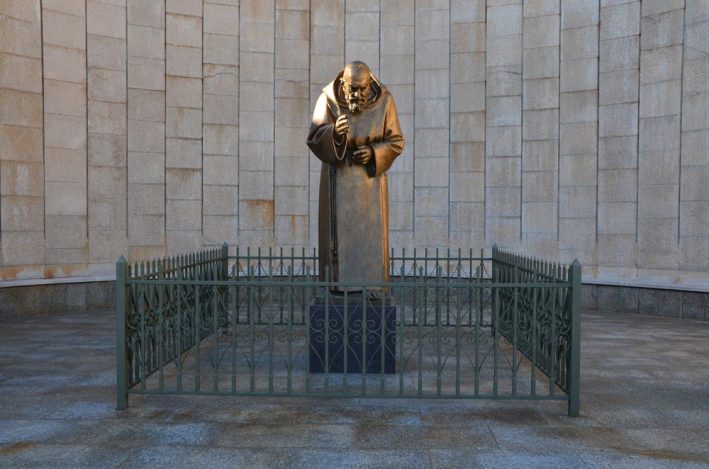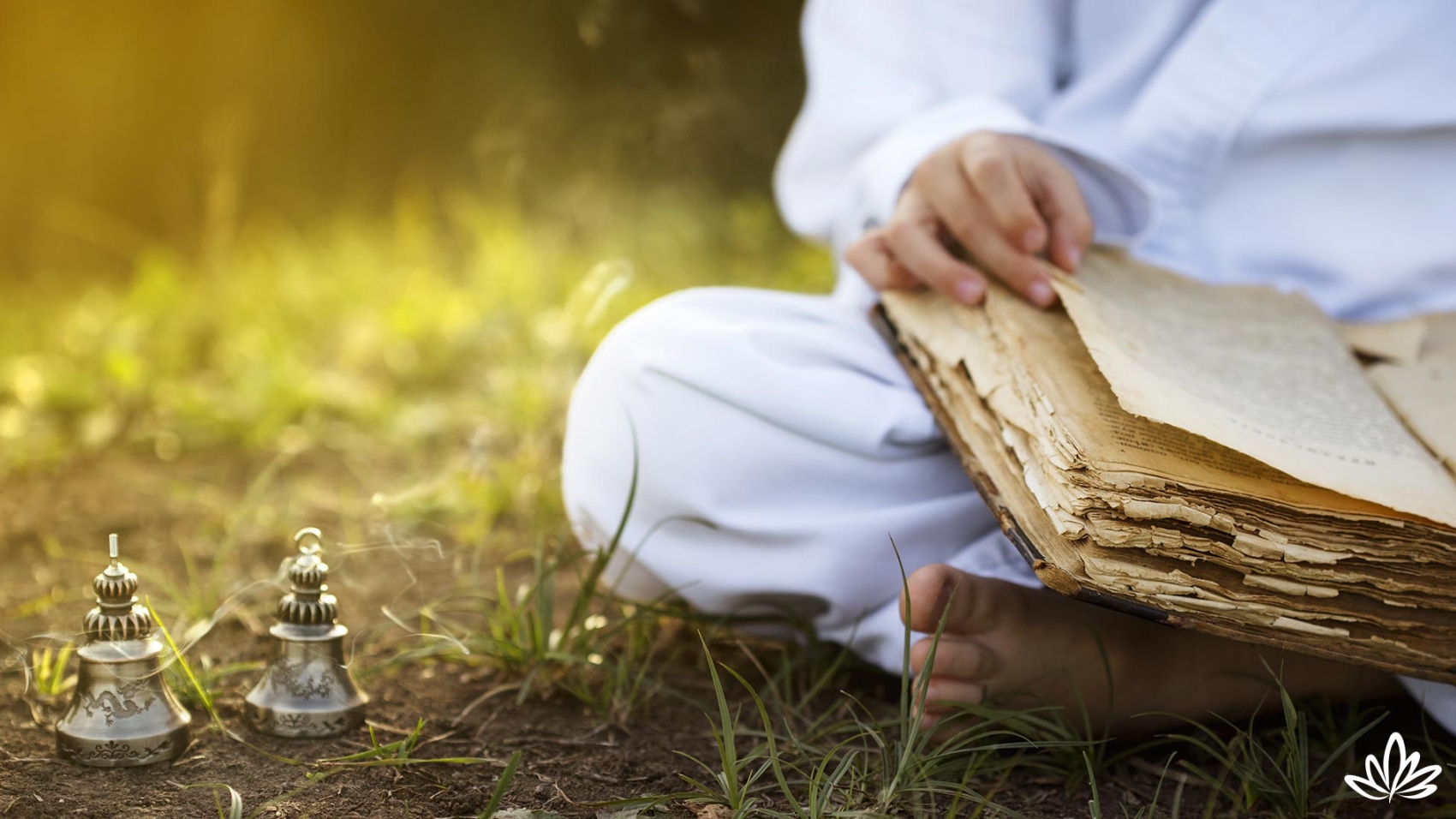8 Ways to Heal Your Home
Home is where the heart is, or so the saying goes. But, what if your home makes your heart race and when you return home feels like you are standing in front of you like a bridge you’re afraid to cross…another obstacle to overcome.
It’s always surprising to me how many people don’t focus on creating a supportive space to live. Most of us don’t organize our living spaces around our well-being, like the feng shui experts of the world say; rather, we live in homes that are largely a happenstance creation that is reinforced by daily habits.
If your home doesn’t support your own healing efforts, it’s time to heal your home.
8 tips to heal your home

- Clean out clutter It should come as no surprise that the concept of cleaning out one’s closet (both literally and figuratively) will have a positive impact on both your energy and the energy of your home. The philosophy of purging items that don’t “spark joy” can find origins in both ancient Feng shui practices and modern human behavioral studies.
For thousands of years, feng shui has been used to balance one’s internal energy with that of their environment. As an energy healing practice, feng shui seeks to balance the physical elements of the universe, earth, and humanity – and, yes, this includes the furniture in your living room – with invisible forces that bind everything together. When there are too many physical elements, feng shui energies are unable to move naturally and freely.
- Household clutter and mess can feel incredibly overwhelming, only adding to the stress of everyday life that already leaves many people struggling. In fact, a research study at UCLA found that stress hormone levels increased significantly in female homeowners that had a high density of household objects. Basically, the more stuff they had in their homes, the more pressure and anxiety the women felt.1
- Give your home a breath of fresh air
Fresh air is invigorating and refreshing for both moving and still life. Since your home isn’t able to attend your Pranayama yoga class with you, throw open your windows and let it breathe a deep cleaning breath!For your home to reap the benefits of fresh air, be sure to open your windows every day. Yes, even if it is February and your home is in a cold climate, allowing your home to take a deep cooling breath every day will release built up anxiety and stale air, transforming the energy inside.
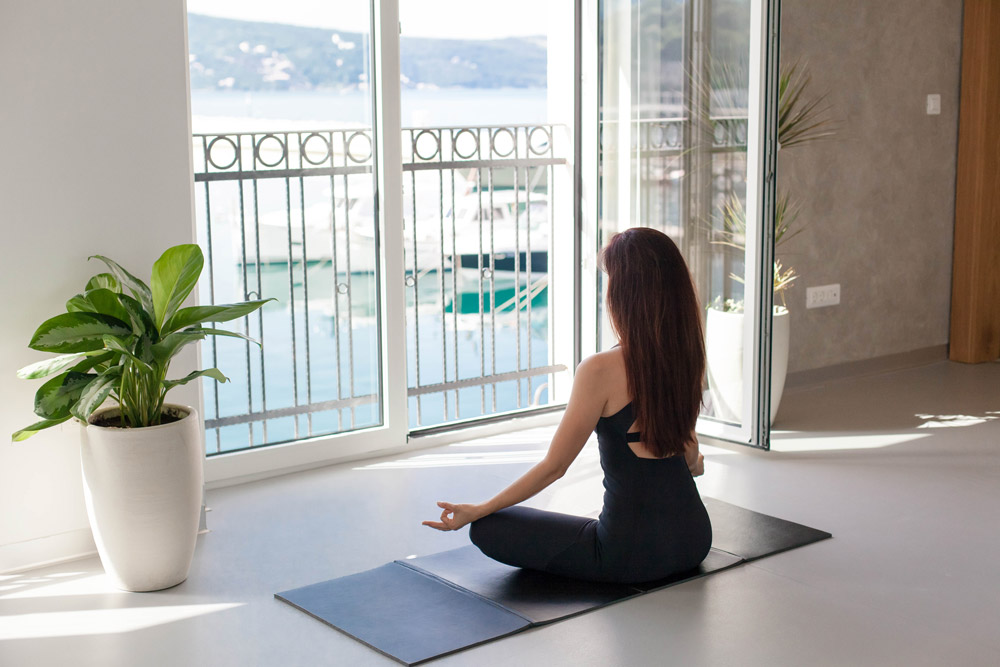
- Don’t let opening your home’s window become mundane and routine (like making your bed or brushing your teeth); take the opportunity to practice your own breathing techniques. Pranayama is the formal practice of controlling the way you inhale and exhale, helping you to manipulate your vital energies to activate or soothe your mood.
When practiced regularly, Prana breathing builds life force energies and rejuvenate healing efforts in both you and your home. Every Prana breath taken does so much more than simply taking in air; you are taking in stimuli of all forms—from sights and sounds to smells, feelings, ideas, and knowledge. Prana breathing provides the initial burst of energy that sets things in motion, enhancing your appreciation and zest for life, opening your heart and mind to new possibilities, and reinvigorating your desire for relationships that illuminate your spirit.
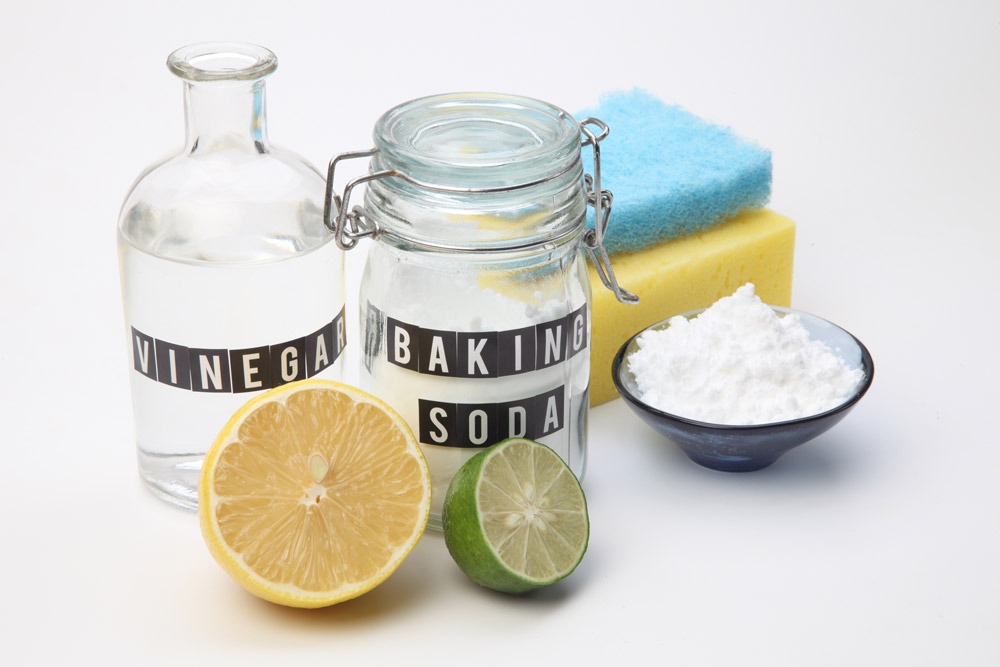
- Detox toxic cleaners
When it comes time to clean the physical dirt out of your house, be sure you aren’t exacerbating the problem by using toxic cleaning agents.Many people are unaware of the dangers of using widely-available home cleaners that contain toxic chemicals. Whether the cleaner makes your eyes when you spray it or you have to open the windows to air out the room because of the strong smell, these reactions are not normal and dangerous. Your body is telling you the cleaning agent you are using is highly toxic and can harm you — listen!
- Natural cleaners, like hydrogen peroxide, baking soda, and vinegar, are easy to use and cheaper than most commercial chemical cleaners. And, yes, they work just as well! You can add essential oils like tea tree, lavender, eucalyptus, and lemon if you want to purify your home with a fresh scent. After all, the “scents” and “fragrances” from commercial cleaners aren’t natural; they are created from chemicals in a lab and inhaling them can be dangerous.
- Bring the great outdoors inside
Whether you live in the middle of a big city or the mountains, your home will benefit from bringing some of the outdoors inside. One way to do this is by adding some green plants to your home; not only will your home will look beautiful, but it will be brighter and have better air qualify.Plants improve air quality by adding additional oxygen to your home and absorbing harmful pollutants, some of which occur naturally just by breathing. You don’t have to have a greenhouse or degree in botany to reap the benefits of plants. Palms, ferns, ivy, chrysanthemums, and spider plants are all easy-to-care-for plants that will improve the air quality of your home.

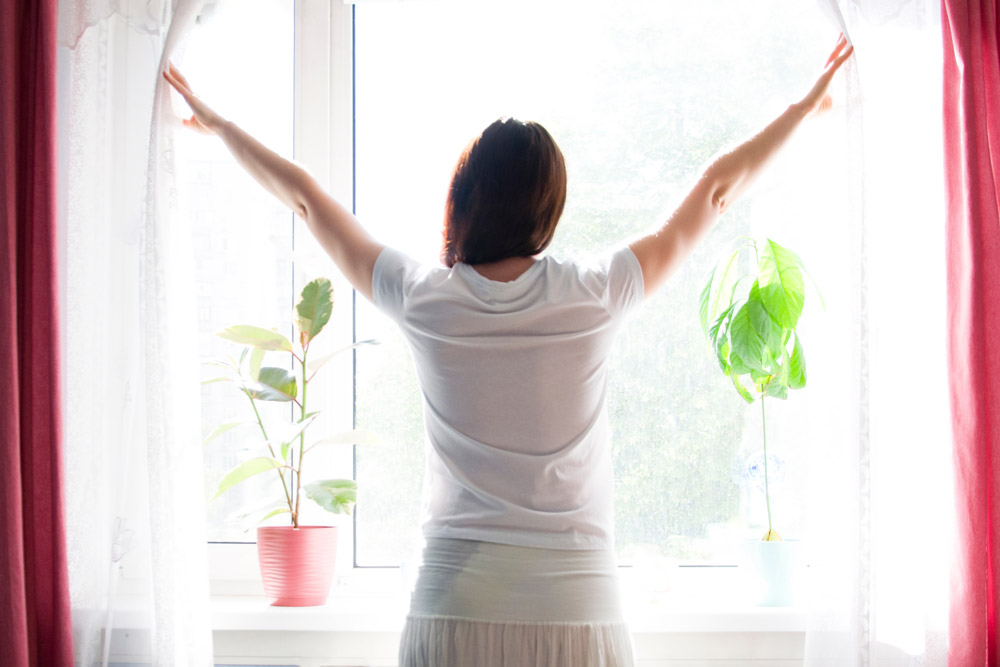
- Eternal sunshine of your mind
When you fill your home with sunlight, you can’t help but feel lighter, body, mind, and spirit. With your house is illuminated, it will begin to heal and radiate the type of energy that makes you feel good. Sun on your mind brings warmth to in your heart (and remember our saying? Home is where the heart is…).Moreover, your new plants can’t survive without some sunshine, so draw back those curtains and let that big healing circle in the sky provide you both some natural nourishment. Like a warm cozy embrace from the sky.
- Turn off the TV and play some music
If you are someone who falls asleep to the TV— or enjoys having it on as white noise in the background— try swapping it for some soothing music.Music is made up of vibrations, which are simply different types of energies. These waves of music will reverberate throughout your home and play a role in the positive vibrations you’ll feel as a result.
Music can have a powerful and immediate impact on your energy and mood, both positive and negative. Classic orchestral music, with sweet violins singing alongside violas and cellos that join in harmony, promote positive healing vibrations. As a result, your body will relax and you’ll feel peaceful.
However, music can have the opposite effect, too.

- Heavy metal and hard rock, with screaming guitars shredding chords accompanied by angsty and emotional song lyrics, have the opposite effect on energy and our bodies: you will be anxious and tense after the song ends.If you are looking for a music playlist that will help your home feel more zen (vs. Zeppelin), there are many great options on Spotify, YouTube, iTunes, Apple Music, and SoundCloud.

- Scents and aromas
In addition to the sights and sounds throughout your home, your sense of scent can have a profound impact on your healing capabilities and well-being.Different scents have the ability to instantly remind us of past experiences (both positive and negative). If you don’t have a scent that brings you comfort or peace, pick one! Just make sure that you are choosing a fragrance made of essential oils; many candles and diffusers available today are nothing more than chemicals that were created in a lab and will pollute your home’s air when burned/released.
- Dedicate a sanctuary for healing
While your entire home should be a place where you feel at peace, be sure that you have a place inside that always allows you to be peaceful and serene. It can be a small nook in your bedroom, a water fountain next to your bedside, or a candle in your living room. One of the best ways to heal your home is to meditate in it.You may want to go a step further and fill the space with meaningful pictures and items that make you happy. When you need to rest and restore yourself, this is the space you should turn to.

Start healing your home today
Many people don’t think about how they can improve the energy in their home, but having a healthy home can make a difference in your life. At its most basic, your home is a reflection of the state of your well-being, something that you can actively change if you aren’t happy with its current state. The tips listed in this article are all easy things that you can do to heal the energy in your home quickly.
And if you already find serenity and peace in your home, share some of your practices with us on our Facebook page.
Celebrating Pets! What we can learn from their intelligence, abilities, and healing powers.
Celebrating Pets! What we can learn from their intelligence, abilities, and healing powers.
Three Ways to Overcome the Barriers You Are Setting for Yourself
Three Ways to Overcome the Barriers You Are Setting for Yourself
Kick Off a New Healthier and Happier You!
Kick Off a New Healthier and Happier You!
Where are we in the universal cycle of light and dark?
Where are we in the universal cycle of light and dark?
Forgiving the utterly unforgivable
Forgiving the utterly unforgivable
The Heroic Thai Diver Rescue Teaches Us Generosity
The Heroic Thai Diver Rescue Teaches Us Generosity
7 Reasons to Embrace Gratitude
Thanksgiving is, quite literally, a holiday of giving thanks, so most people have some tradition of gratitude. Whether it is making a list of the things you’ve been grateful for this year, or sitting down at the family table piled with turkey and all the fixin’s with each person expressing thanks for one thing in their life, you probably consider gratitude as important a part of the Thanksgiving festivities as the turkey and pumpkin pie. But what about practicing gratitude the rest of the year?
Gratitude Is Not Just for Thanksgiving
Study after study has shown that gratitude is good for your mental, emotional, physical, and spiritual health, so the more often you do it, the better you’ll feel! Gratitude has been shown to have numerous benefits, from increased life satisfaction and happiness to more compassion to better rest. And in energy healing, gratitude goes a long way toward keeping your chakras clear and balanced.
The best way to practice gratitude is to add it to your spiritual routine. Just as you set time aside each day for meditation, set time aside each day for a gratitude session. Journaling right before bed about what you are thankful for is ideal, but any time of the day will work, and if you would prefer to speak your list, that’s fine, too. The most important thing is to keep it up. Here’s why:
- Gratitude can help you through tough times.
Listing what you are grateful for seems like a small thing, but it carries so much weight. It’s so easy to forget how lucky you are, how much there is to appreciate even when things are rough. Think about how often someone who goes through a trauma comes out the other side with a new zest for life—this is the power of gratitude in action. When you are aware of and thankful for the small joys of being a body on this planet as well as a soul born out of light, you create a reserve of happiness that boosts you through tough times.
- Gratitude is a natural sleep aid.
If you’re worried and anxious as you drift off—or toss and turn trying to drift off—the level of stress hormones in your body wreak havoc with your sleep quality, which results in you waking up feeling like you need another night of sleep. And a worried mind is restless, making it difficult to drift off. Gratitude improves your sleep quality and duration by keeping you calmer and less stressed, and having a positive attitude when you get into bed helps you fall asleep faster.
- It lowers your stress.
Stress is responsible for so much damage to your mind, body, and soul that you should do whatever you can to help combat its negative effects. Just as energy healing is a natural stress buster, so is gratitude. When you are being thankful, you are in a positive frame of mind and you are focusing not on your troubles, but on a little piece of happiness. This moment of respite increases your ability to cope with the stressors in your life.
- Gratitude deepens your relationships.
As part of your nightly gratitude list, try recognizing the qualities and behaviors of the people you are thankful for. Maybe your best friend always sends you birthday flowers or your partner makes you coffee before you get up each morning. Being thankful for the little things your family and friends do makes you appreciate them more, and improves your interactions with them. This shift in focus also helps train you to see the best in people, and the best in yourself, which makes you warmer, kinder, and better liked, because you are a better friend, spouse, sibling, etc.
- It speeds up your spiritual progress.
In my healing courses I often talk about the importance of service to others. It’s one of the best ways to increase your chances of an initiation by providing a solid base for the new energy. Gratitude makes you more compassionate and empathetic to others, which means you are more likely to engage in random acts of kindness and help others in need. Thinking of others also brings you out of thinking about yourself, which makes you happier and speeds up the process of processing old wounds and traumas, an essential part of energy medicine.
- Gratitude helps you live longer.
Grateful people are usually more optimistic, and optimism has been linked to longer life spans, greater immune function, and lowered blood pressure. Studies have shown that people who are grateful and optimistic are also more likely to exercise regularly and maintain a healthy weight. Being thankful for all the small things makes you feel inspired, which turns into a desire to take better care of yourself, which can add years to your life.
- Gratitude begets gratitude.
When you begin to notice all the little things there are to be grateful for each day: the unconditional love of a pet, your health, the sun in the sky, a thoughtful email from a friend, the smell of freshly brewed coffee—whatever small and large things make you smile—you begin to feel even more grateful to be alive and experiencing all this world has to offer. Your happiness makes you more appreciative, which makes you happier and kinder to others, which then rubs off and makes them grateful and happier. Gratitude is a win-win, a vital part of increasing the love on this planet.
Do you see how gratitude affects all areas of your life and builds on itself? Thankfulness is an upward spiral. Being grateful makes you happier, which makes you kinder and more compassionate, which means others respond to you with more compassion and kindness, which makes you even more grateful. As an energy healer and spiritual teacher who has seen the power of gratitude, I’d love for Thanksgiving to be a spring board for you to begin your daily routine of giving thanks. Try it for a year, and I guarantee that next Thanksgiving, gratitude is what you’ll be most thankful for.
This is your superpower. Don’t squander it.
This is your superpower. Don’t squander it.
The Enlightened Way to Face Death (with the Tibetan Book of the Dead)
The Enlightened Way to Face Death (with the Tibetan Book of the Dead)
From India to Ojai: The Life & Legacy of Krishnamurti
From India to Ojai: The Life & Legacy of Krishnamurti










